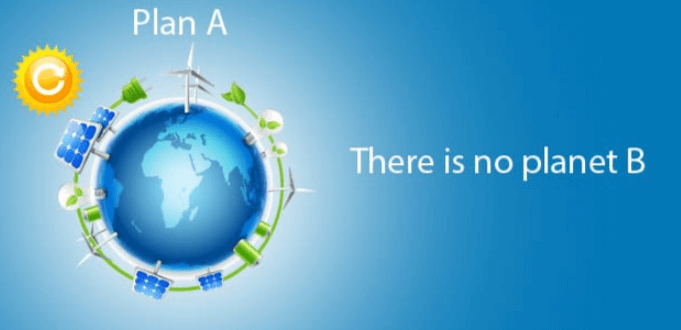What are the latest developments in sustainable technology and how are they helping to combat climate change?

Introduction
The pressing challenge of climate change has spurred rapid advancements in sustainable technology. These innovations are crucial in reducing greenhouse gas emissions, conserving resources, and fostering a more sustainable future. This article delves into the latest developments in sustainable technology and their significant role in combating climate change.
Renewable Energy Innovations
Renewable energy technologies have seen remarkable progress, particularly in solar, wind, and hydro power. New photovoltaic cells are now more efficient, capturing more sunlight and converting it into electricity with minimal energy loss. Additionally, floating wind farms are expanding the potential of wind energy by harnessing stronger and more consistent winds over the ocean.
Advancements in Solar Power
Solar power technologies have evolved with the advent of perovskite solar cells, which offer higher efficiency and lower production costs. These cells can be integrated into a variety of surfaces, including windows and building facades, enhancing their applicability. Furthermore, solar farms are now equipped with bifacial panels that capture sunlight from both sides, maximizing energy output.
Wind Energy Technologies
The wind energy sector has introduced larger, more efficient turbines capable of generating greater amounts of electricity. Offshore wind farms are becoming more common, taking advantage of higher wind speeds and reducing the impact on land use. Innovations like airborne wind turbines, which operate at higher altitudes, are also being explored for their potential to harness more consistent wind currents.
Hydroelectric Power Developments
Hydroelectric power remains a vital source of renewable energy, with advancements in small-scale hydro systems making it more accessible. These systems can be deployed in smaller rivers and streams, providing localized power generation without significant environmental disruption. Additionally, pumped-storage hydroelectricity is being optimized for better energy storage and grid stability.
Breakthroughs in Energy Storage
Effective energy storage is critical for balancing supply and demand in renewable energy systems. Innovations in battery technology, such as solid-state batteries, offer higher energy densities, faster charging, and longer lifespans. Additionally, the development of grid-scale storage solutions like liquid air energy storage and advanced flywheel systems is enhancing the reliability of renewable energy sources.
Solid-State Batteries
Solid-state batteries represent a significant leap forward, using solid electrolytes instead of liquid ones to enhance safety and performance. These batteries have higher energy densities, which means they can store more energy in a smaller space. They also have faster charging times and longer lifespans, making them ideal for both consumer electronics and electric vehicles.
Liquid Air Energy Storage
Liquid air energy storage (LAES) systems are emerging as a viable solution for large-scale energy storage. LAES systems store excess energy by cooling air to a liquid state, which can later be expanded to drive a turbine and generate electricity. This technology offers high energy capacity and long-term storage capabilities, making it a promising option for stabilizing the grid.
Advanced Flywheel Systems
Flywheel energy storage systems store energy in the form of rotational kinetic energy. Recent advancements have improved their efficiency and energy capacity, making them suitable for balancing short-term fluctuations in power supply. Flywheels offer rapid response times and can cycle frequently without degradation, enhancing grid stability.
Smart Grid Technologies
The integration of smart grid technologies is transforming the way energy is distributed and consumed. These technologies enable real-time monitoring and management of energy resources, improving efficiency and reliability. Smart grids support the integration of renewable energy sources, demand response strategies, and decentralized power generation.

Real-Time Monitoring and Management
Smart grids employ advanced sensors and communication networks to monitor energy consumption and production in real-time. This data allows for more precise control of energy flows, reducing waste and optimizing the use of renewable resources. Enhanced grid management also facilitates the integration of distributed energy resources, such as rooftop solar panels and home battery systems.
Demand Response Strategies
Demand response strategies involve adjusting energy consumption patterns to match supply. Smart grids can automatically reduce or shift demand during peak periods, alleviating stress on the grid and reducing the need for fossil fuel-based power generation. This flexibility is essential for integrating intermittent renewable energy sources like wind and solar power.
Decentralized Power Generation
Decentralized power generation refers to the production of electricity close to where it is consumed, rather than relying on large, centralized power plants. Smart grids enable the efficient management of decentralized energy resources, such as residential solar panels and community wind turbines. This approach enhances energy security and resilience while reducing transmission losses.
Electric Vehicles and Transportation Innovations
The transportation sector is undergoing a transformation with the rise of electric vehicles (EVs) and sustainable transportation solutions. Advances in EV technology, such as improved batteries and charging infrastructure, are making electric cars more accessible and practical. Additionally, innovations in public transportation and shared mobility are reducing the carbon footprint of urban transportation.
Improved EV Batteries
Battery technology for electric vehicles has seen significant improvements, leading to longer ranges, faster charging times, and lower costs. Lithium-ion batteries remain the standard, but emerging technologies like solid-state batteries and lithium-sulfur batteries promise even greater performance enhancements. These advancements are making EVs a more viable option for a broader range of consumers.
Charging Infrastructure Expansion
The expansion of EV charging infrastructure is crucial for the widespread adoption of electric vehicles. Fast-charging stations are becoming more prevalent, reducing charging times and increasing convenience for EV owners. Governments and private companies are investing heavily in building extensive charging networks, ensuring that EV drivers have access to reliable charging options wherever they go.
Sustainable Public Transportation
Sustainable public transportation solutions, such as electric buses and trains, are gaining traction in cities worldwide. These modes of transportation produce fewer emissions compared to traditional diesel-powered vehicles, contributing to cleaner air and reduced greenhouse gas emissions. Additionally, the development of autonomous electric shuttles is revolutionizing last-mile connectivity, making public transportation more efficient and accessible.
Shared Mobility Solutions
Shared mobility solutions, including bike-sharing and car-sharing programs, are reducing the number of privately-owned vehicles on the road. These programs encourage the use of more sustainable transportation options and reduce traffic congestion. Advances in digital platforms and mobile apps are making it easier for people to access and utilize shared mobility services.





